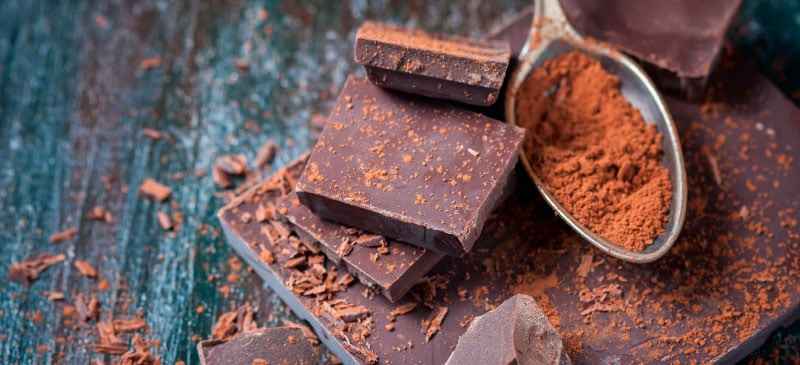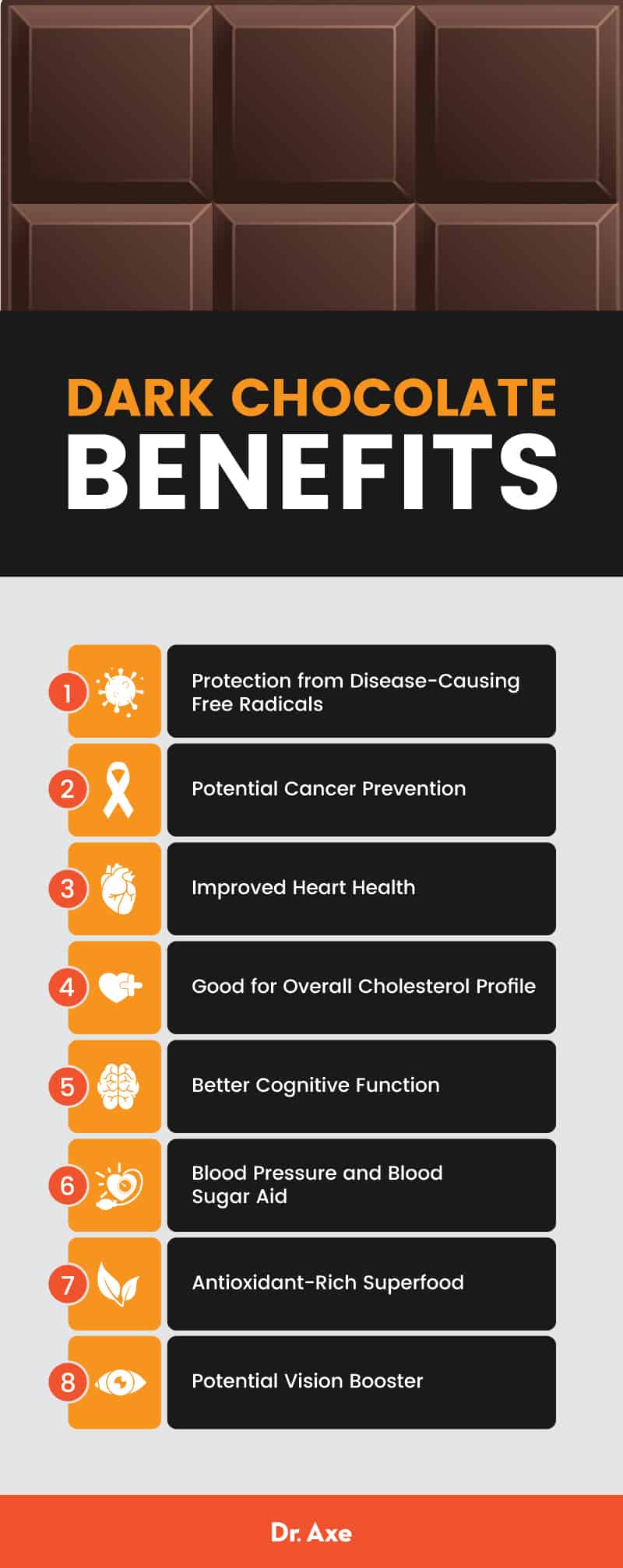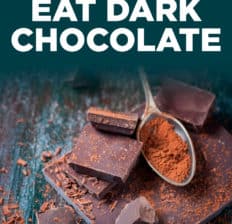This Dr. Axe content is medically reviewed or fact checked to ensure factually accurate information.
With strict editorial sourcing guidelines, we only link to academic research institutions, reputable media sites and, when research is available, medically peer-reviewed studies. Note that the numbers in parentheses (1, 2, etc.) are clickable links to these studies.
The information in our articles is NOT intended to replace a one-on-one relationship with a qualified health care professional and is not intended as medical advice.
This article is based on scientific evidence, written by experts and fact checked by our trained editorial staff. Note that the numbers in parentheses (1, 2, etc.) are clickable links to medically peer-reviewed studies.
Our team includes licensed nutritionists and dietitians, certified health education specialists, as well as certified strength and conditioning specialists, personal trainers and corrective exercise specialists. Our team aims to be not only thorough with its research, but also objective and unbiased.
The information in our articles is NOT intended to replace a one-on-one relationship with a qualified health care professional and is not intended as medical advice.
How to Get the Benefits of Dark Chocolate & Avoid Heavy Metal Exposure
January 26, 2025

The average American consumes up to 20 pounds of chocolate each year, and well over $100 billion is spent annually worldwide on chocolate. With this much chocolate eating going on, it’s essential to make smarter choices about what kinds you consume so you can enjoy your favorite treats guiltless and take advantage of all the health benefits of dark chocolate.
Although some types are brimming with important antioxidants and polyphenols, it’s important to note that not all chocolate is created equal. The potential perks of processed, highly sweetened chocolate are slim to none, but those of a high-quality dark chocolate are numerous and quite impressive.
In fact, it’s never been more important to take real care in the dark chocolate you purchase and eat considering a 2024 Consumer Reports analysis found that 23 of 28 dark chocolate bars its researchers examined tested positive for alarming levels of heavy metals, while all 28 had at least traces of lead and cadmium.
So is dark chocolate good for you, and is eating chocolate healthy or harmful? Turns out that dark chocolate is both a high-fiber and an iron-rich food, but it also can contain harmful heavy metals and additives.
Here’s what you need to know about this sweet treat and how you can enjoy it as part of a healthy diet.
Nutrition facts
You wouldn’t think any candy bar could ever be nutritious, but dark chocolate nutrition is actually quite impressive, especially when it comes to fiber, iron, magnesium, manganese and copper.
A one-ounce serving of dark chocolate with 70 percent to 80 percent cacao solids (about 28.4 grams) contains approximately:
- Calories: 170
- Total Carbohydrates: 13 g
- Fiber: 3.1 g
- Sugar: 6.8 g
- Total Fat: 12.1 g
- Saturated Fat: 7 g
- Polyunsaturated Fat: 0.4 g
- Monounsaturated Fat: 0.01 g
- Trans Fat: 0.001 g
- Protein: 2.2 g
- Sodium: 5.7 mg (0.3% DV*)
- Copper: 0.5 mg (56% DV)
- Manganese: 0.6 mg (26% DV)
- Iron: 3.4 mg (19% DV)
- Magnesium: 64.6 mg (15% DV)
- Zinc: 0.9 mg (8% DV)
- Phosphorus: 87.3 mg (7% DV)
- Potassium: 203 mg (4% DV)
- Selenium: 1.9 mcg (3% DV)
- Vitamin K: 2.1 mcg (2% DV)
- Calcium: 20.7 mg (2% DV)
*Daily Value: Percentages are based on a diet of 2,000 calories a day.
Dark chocolate also contains tannins, theobromine and other beneficial compounds, similar to carob chips.
Dark chocolate benefits
1. Protection from disease-causing free radicals
One of the greatest advantages of eating chocolate is its ability to fight free radicals, which are harmful compounds created by cellular processes in the body that can contribute to inflammation and chronic disease.
Antioxidants are the compounds that are believed to neutralize free radicals and protect the body from damage and disease.
Dark chocolate is loaded with antioxidants, including flavonoids and polyphenols. The cocoa, in particular, has actually been shown to have a high count of polyphenols and flavonoids that is even greater than wine and tea.
Therefore, the higher the cacao/cocoa percentage of your next treat, the more awesome antioxidants you’ll eat.
2. Potential cancer prevention
It may be hard to believe, but that tasty chocolate you eat and love may also help you ward off cancer. That’s right — one of the benefits of dark chocolate is its potential as a cancer-fighting food.
Research has shown that the flavonoids and antioxidants found in chocolate may be especially beneficial against colon cancer.
One review noted that it could potentially help protect against colorectal cancer due to its ability to decrease oxidative stress, reduce inflammation and block the growth of cancer cells.
It’s also been shown to help improve the nutritional status of cancer patients, with researchers declaring “the consumption of chocolate with a greater cocoa content may contribute to the improvement of the nutritional status and functionality among older cancer patients in palliative care. The consumption of white chocolate was associated with improved oxidative stress.”
3. Improved heart health
Flavanols are the main type of flavonoid found in chocolate. According to Cleveland Clinic, research has shown that flavanols have a very positive effect on heart health by reducing blood pressure and improving blood flow to the heart as well as the brain, thereby reducing the overall risk of heart disease.
These flavanols can also help prevent blood platelets from clotting, which could reduce the risk of stroke.
A study published in the International Journal of Cardiology had subjects consume either a daily dose of flavonoid-rich dark chocolate or non-flavonoid white chocolate for two weeks. The results showed that flavonoid chocolate intake significantly improved circulation in adults whereas the white chocolate had no positive impact on health.
Another study published in 2015 followed the health of over 20,000 people for 11 years and concluded that higher chocolate intake was associated with a lower risk of heart disease. In fact, among subjects who consumed the most chocolate, 12 percent developed or died of cardiovascular disease during the study compared to 17.4 percent of those who didn’t eat chocolate.
4. Good for overall cholesterol profile
The cocoa butter found in chocolate is high in healthy fats and polyphenols, which are beneficial compounds that act as antioxidants in the body. Dark chocolate is actually a rare high-cholesterol food to include versus avoid.
A 2009 study published in the Southern Medical Journal looked at the impact of chocolate on 28 healthy subjects and found that just one week of dark chocolate consumption improved lipid profiles, decreased platelet reactivity and reduced inflammation.
Another review of 10 studies showed that consuming flavonol chocolate was effective at reducing levels of total and bad LDL cholesterol, both of which are major risk factors for heart disease. Dark chocolate also has been found in observational studies to help lower LDL and serum fasting blood glucose in diabetics.
It should be noted that it does not appear that cocoa has much effect on good HDL cholesterol, but it does in fact help lower LDL cholesterol.

5. Better cognitive function
Some research has suggested that flavonol-rich dark chocolate could increase blood flow to the brain, which could potentially aid in the treatment of cognitive conditions like Alzheimer’s disease and Parkinson’s.
Not only that, but a 2009 study published in the Journal of Nutrition noted that consumption of flavonoid-rich foods — such as chocolate, wine and tea — was linked to better brain function and improved cognitive performance. These effects were also found in a 2022 study that revealed that “dark chocolate may help reduce fatigue in individuals, leading to improvements in brain health and various cognitive functions as well as in quality of life.”
6. Improves blood pressure
Several studies have shown that because it increases nitric acid in the body, adding chocolate to your diet can reduce blood pressure levels, which could help protect against conditions like heart disease and stroke.
For example, one 2015 study found that consuming 25 grams of dark chocolate was effective at lowering blood pressure in those with type 2 diabetes and hypertension. Not only that, but it was able to significantly decrease fasting blood sugar levels as well compared to a control group.
7. Antioxidant-rich superfood
In a study published in Chemistry Central Journal, the total flavanol and polyphenol levels as well as antioxidant activity of chocolate and cocoa powder were compared to super fruits like acai, cranberry, blueberry and pomegranate.
What did the study show? The researchers found that the flavanol count of cocoa powder (30.1 milligrams per gram) was significantly greater than all of the other super fruit powders.
It was also revealed that the antioxidant capacity of dark chocolate was higher than all of the super fruit juices except pomegranate. Plus, the total polyphenol levels per serving were also highest for chocolate (about 1,000 milligrams per serving), which was significantly higher than all of the fruit juices except pomegranate juice.
8. Potential vision booster
Although more research is needed, one June 2018 human clinical trial observed that contrast sensitivity and visual acuity of 30 participants improved after consuming dark versus milk chocolate, meaning that it could potentially help boost vision.
However, more studies are needed to evaluate how its components could impact vision long term, particularly since a 2019 double-blind, randomized, clinical crossover trial “did not find any effects on subjective (visual function) or objective (retinal perfusion) end points.”
While it appears early research is mixed, a 2020 study did determine that “dark chocolate did not result in significant changes in retinal perfusion and choriocapillaris flow area. However, given the results of other studies showing the positive effects of flavonoids on visual function, further studies are warranted using pure chocolate without other components such as caffeine that can potentially affect results. Furthermore, we cannot rule out the possible benefits of higher doses of flavonoids in dietary supplementation over a more extended period and in a larger patient population.”
9. Protects skin health
One of the top dark chocolate benefits for skin is attributed to its flavonol status and its ability to protect against sun damage. In fact, a study out of London found that eating flavonol chocolate could help prevent damage caused by ultraviolet light.
Meanwhile, other research has indicated that regular consumption of chocolate may also reduce skin roughness, enhance hydration and improve blood flow to the skin.
10. Reduces stress
A June 2022 study published in Nutritional Neuroscience evaluated the impact of eating dark chocolate for stress among rats. Researchers found that dietary patterns including dark chocolate reversed the harmful impact of chronic isolation stress on brain nerve cells that impact memory processing and learning.
Although more research is needed on the impact of chocolate for stress in humans, this study suggests that it may improve the brain’s ability to deal with chronic stress. Other studies have offered similar findings as well.
For instance, a 2014 controlled clinical study found that consuming chocolate over two weeks seemed to reduce perceived stress in women. This is among the reasons dark chocolate is considered a happy food.
11. Protects against diabetes
Research in 2024 looked at prospective cohort studies to evaluate whether dark chocolate benefits extend to diabetes prevention, and the researchers found some surprising results. After examining the results of various studies over years and years, it was determined that increased dark chocolate consumption was associated with a decreased risk of type 2 diabetes.
Perhaps even more surprising, milk chocolate consumption did not have this effect.
That’s not all. Increased milk chocolate consumption was linked to long-term weight gain, but increased dark chocolate intake was not.
Other research has unearthed similar results, noting that dark chocolate consumption is associated with a lowered risk of diabetes.
Risks and side effects
Despite the many dark chocolate health benefits, there are several side effects to consider as well. In particular, chocolate has been linked to:
- acne
- weight gain
- gas and bloating
- headaches
- sleep disturbances
- mood changes
- cavities
- constipation
- nervousness
Then there is the Consumer Reports analysis that showed many popular dark chocolate brands contain heavy metals. In this report, CR tested 28 chocolate bars from a variety of brands.
The researchers noted that eating an ounce a day of 23 of those brands “would put an adult over a level that public health authorities and CR’s experts say may be harmful for at least one of those heavy metals. Five of the bars were above those levels for both cadmium and lead.”
Regular heavy metal exposure can lead to development issues and have more negative side effects. As CR pointed out, “frequent exposure to lead in adults, for example, can lead to nervous system problems, hypertension, immune system suppression, kidney damage, and reproductive issues.”
Here is more on the findings from Consumer Reports:




Additionally, many people wonder whether or not it’s a vegan-friendly food. That depends.
Whether you avoid eating dairy for personal or health reasons, it’s important to be extra careful about label reading to ensure that you get 100 percent dark chocolate. Milk is legally permitted to be put into dark chocolate, but since it’s one of the eight major food allergens, U.S. laws do require chocolate makers to list milk as an ingredient.
According to the U.S. Food and Drug Administration, chocolates are one of the most common sources of undeclared milk linked to consumer reactions. In addition, recent testing by the FDA found that you can’t always tell if a chocolate has milk just by reading the ingredient list.
Many manufacturers make their dark chocolate on the same equipment that they use for milk chocolate production, which increases the risk of cross-contamination. If you’re concerned about milk possibly being in your chocolate, it’s best to contact the manufacturer prior to consumption.
Another possible allergen to watch out for in chocolate (even organic brands) is soy lecithin, which is commonly added as an emulsifying agent. Soy lecithin does contain trace amounts of soy proteins, which have been shown to include soy allergens.
However, soy lecithin does not appear to contain sufficient soy protein residues to induce allergic reactions in the majority of soy-allergic consumers.
Chocolate is not a low-calorie or low-fat food, so these are some other good reasons not to overdo it. Plus, it does contain sugar, especially when it’s combined with other high-sugar ingredients, like dried cranberries or other fruits.
Simply put, the flavor is so rich that you can enjoy it and get the benefits of dark chocolate with just a little piece.
If you have pets, make sure they don’t get into your chocolate stash, since chocolate in all forms is poisonous to both cats and dogs.
How much to eat
Although chocolate can be a great addition to a healthy diet, it’s important to keep in mind that each serving packs in a high amount of calories.
To avoid overindulging, it’s best to eat a little piece by itself after a solid meal or include it in a recipe when baking at home. Start with around one ounce per day to keep your calorie consumption under control.
Be sure to also make other adjustments to your diet as needed to account for extra calories if you’re enjoying it while on a weight loss diet.
If you have any dietary restrictions, it’s also best to moderate your chocolate intake. While you can enjoy it on a keto diet, for example, it’s best to select varieties with a higher dark chocolate percentage and stick to smaller servings to minimize your carb intake.
Selecting products with at least 70 percent cocoa can also help ensure that you get the best dark chocolate possible.
Additionally, if you’re sensitive to caffeine or looking to avoid caffeine entirely, it’s important to know that there are measurable amounts of caffeine in chocolate. Caffeine overdose side effects can include nervousness, increased urination, sleeplessness and a rapid heartbeat.
For reference, one ounce of chocolate contains around 12 milligrams of caffeine. While this is significantly less than a cup of coffee or an energy drink, it’s still something to be mindful of when picking your portion size if you’re sensitive to caffeine.
Recipes
Are you ready for some of the most delicious and nutritious dark chocolate recipes? With these recipes, you can get all the benefits of chocolate without any of the guilt.
Here are a few recipes that are sure to satisfy that chocolate craving without any of the guilt:
- Dark Chocolate Almond Butter Recipe
- Dark Chocolate Protein Truffles Recipe
- Dark Chocolate Coconut Clusters Recipe
Conclusion
- Is dark chocolate good for you? Take a look at the nutrition facts, and it’s easy to see why this incredible ingredient is packed with health benefits.
- In addition to being a high-fiber food, each serving is also loaded with manganese, copper, iron and magnesium.
- Some of the top benefits of dark chocolate, cocoa powder and cocoa butter include improved heart health, blood pressure and brain function. Other potential benefits of eating this tasty food include enhanced skin health, increased vision and reduced cholesterol levels.
- Weight gain, acne, bloating, headaches and sleep disturbances are a few of the most common side effects of dark chocolate.
- Additionally, because it can be relatively high in calories, it’s important to moderate your intake and select healthy dark chocolate varieties with a higher percentage of cocoa solids to maximize the health benefits of dark chocolate.
- It’s also important you select high-quality, safe dark chocolate because a 2024 Consumer Reports analysis found that 23 of 28 dark chocolate bars it tested had concerning levels of heavy metals, and all 28 had at least trace levels.





